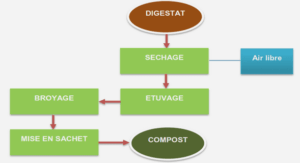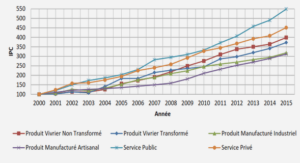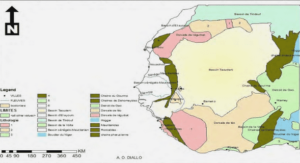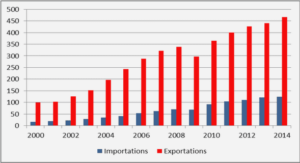Innovation a theoretical Background
Innovation: a conceptual background
Let‘s consider a world without airplanes, automobiles, telecommunications, televisions, refrigerators, telephones, internet, agriculture …where would we be without essential stuff for our lives such as alphabet, languages, printing etc? Maybe you would not read this paper which you are reading right now, and I of course would not be able even to write a word in it. Without Innovation our world would look very, very different, hence Innovation is as old as mankind itself, there seems to be something naturally human to thing about new and better ways of doing things and try them out in practice. In spite of its clear significance, Innovation has not always got the scholarly attention it deserves, except in the recent few years nevertheless some authors have been interested in Innovation processes : from the viewpoints of economic growth, changes and progress2 (Schumpeter 1939; Schmookler 1966; Freeman 1990; Kline & Rosenberg 1986; Dosi 1982; Amendola & Gaffard 1988, etc.), of social and organizational changes (Rothwell, 1994; Chandler 1990; Callon, 1994, etc.), or from the sociological and managerial viewpoint (Crozier & Friedberg 1977; Mintzberg 1982; Akrich, Callon & Latour 1988; Alter 2000, etc.).
Theoretical origins of the Innovation process show nevertheless a dual permanent feature. First, it is an integral part of the goods launched on the market, and thus, implicitly, of their success or failure with customers. Then, chronologically, the process is always the same: conception, development and diffusion.
Most authors, economists and theoreticians in the field of Innovation have generally accepted that Innovation is a key condition for economic success (Hamel, Gary & Gary Getz 20043; Audretsch et al 20004; and Dixon, Donald 20005). It has also been argued that the most remarkable examples of growth have been based on „upsetting Innovation‟s platform.
Incremental Innovation and Radical Innovation
The Incremental-Radical Innovation dichotomy is one of the well known theories that emerged during the late 1970s. Incremental Innovation is an Innovation that improves the conveyance of a currently delivered benefit, but produces neither a behaviour change nor a change in consumption, it involves small or big improvements that add value to the product and generate benefits to the customer. It‟s in fact so difficult to know who pioneered the Incremental-Radical dichotomy, partly because the concept was used by many authors, often with a different terminology but expressing the same meaning. We can use two dimensions to separate an incremental from a radical Innovation, and they are as the following:
1. The first dimension is internal, based on the knowledge and resources involved in the Innovation.
An incremental Innovation is built upon existing knowledge and resources within a certain company, meaning it will be as an enhancement for the product or service itself, while a radical Innovation, on the other hand, will require completely new knowledge and resources.
2. The second dimension, which is external, differentiates the Innovation based on the technological changes and on the impact upon the market competitiveness. An incremental Innovation will involve modest technological changes and the existing products on the market will remain competitive while radical Innovations involve large technological advancements, rendering the existing products non-competitive and obsolete.
Under this framework it is clear that incumbents might have a hard time facing radical Innovation both for the reason that they operate under a “managerial mindset” constraint and because strategically they have less of an incentive to invest in the Innovation if it will cannibalize their existing products. Furthermore incumbents will be in a better position if the Innovation is incremental since they can use existing knowledge and resources to leverage the whole process. New entrants, on the contrary, will have a large advantage if the Innovation is radical because they will not need to change their knowledge background, Audretsch (1995), for instance, suggests that almost 90% of commercially significant Innovations in the US are actually incremental in nature.
Overall we can say that the Incremental-Radical dichotomy helped to explain some Innovation patterns, and there was favourable evidence for the model within most mature industries. Over the last decades, however, the model lost some reliability as the pace of change accelerated in most sectors. There were cases where new entrants managed to displace incumbents with incremental Innovations and other cases where incumbents kept their leadership exploiting a radical Innovation.
Marketing: a conceptual background
Marketing definition
The practice of marketing is reasonably ancient. That is from going back to the Greek philosophers such as Plato and Aristotle, medieval church fathers such as St. Thomas or Martin Luther, and later classical economists such as Adam Smith and David Ricardo have reflected on marketing behaviour. However, the formal concept of marketing emerged only 100 years ago at the beginning of the twentieth century; on the following paragraphs we will see some definitions of marketing concept, which has been added by some marketers, economist and sociologists… Indeed, in 1901 the Report of the Industrial Commission on the Distribution of smallholding and farm Products was first published, and today that seminal work is considered the first book on general marketing.
The definition of the word ―Marketing‖ can be founded within its origins; it means ―putting on the market.‖ Therefore, the purpose of marketing is to act in such a way that a company places on the market products that correspond to demand and satisfy the needs and wants of customers at an acceptable return, but economically Marketing is one of the terms in academia that does not have one commonly agreed upon definition, as that we can say that there are many definitions of marketing, and there is no agreed definition of marketing concept, this term which was defined by certain writers, organizations, and associations, just like what has done in 1937 by the newly born “American marketing association” (A.M.A), which declared that: “Marketing consists of those activities involved in the flow of goods and services from the point of production to the point of consumption.”
There is also the definition that the Chartered Institute of Marketing used it to define marketing, and it is which follows: „Marketing is the management process that identifies, anticipates and satisfies customer requirements profitably‟. Palmer also defines marketing by saying that Marketing is essentially about marshalling the resources of an organization so that they meet the changing needs of the customer on whom the organization depends.
Marketing Activity
At first we have to talk for a while about The Marketing Function and the Marketing Activity which is not always performed by a dedicated Marketing department, that Marketing department may even not practise any marketing at all; its role is often restricted to that of motivating the Sales force and feeding them with general information about products, prices, sales promotion campaigns, and possibly competitors. Marketing role is then integrate and collaborate with other the rest of departments within the organization in ways that enhance the business performance, to achieve the common goals of those departments as well as of the whole organization and its stakeholders. marketing and its activity; it is based on a Model which goes away beyond the frontiers that is determined by the marketing mix.
The Model of Marketing activity as it is structured below in figure 11, is structured on several basic functions and sub-functions of the Marketing Activity, such as learning, anticipation, quality management, risk management, environment analysis, selling, communication and business management, these functions are theoretically strongly related to each other and then they must be related in reality too, but several empirical studies have shown that fewer companies only include such a structure that allows the different departments to work together in an easy way which leads to a higher business performance through having a better interdepartmental integration.
Product Lifecycle
Product Lifecycle or PLC as a short acronym is a well known marketing and economic concept, which refers to the sales numbers of new products according the product existence life-time, and it is based upon four main phases named as: 1) Introduction, 2) Growth, 3) Maturity, and 4) Decline; just like the biological life cycle for any plant or animal. For example, a seed is planted (introduction); it begins to sprout (growth); it shoots out leaves and puts down roots as it becomes an adult (maturity); after a long period as an adult the plant begins to shrink and die out (decline).
In theory it’s the same for a product. After a period of development it is introduced or launched into the market; it gains more and more customers as it grows; eventually the market stabilises and the product becomes mature; then after a period of time the product is overtaken by development and the introduction of superior competitors, it goes into decline and is eventually withdrawn.
Studying Consumer buyer behavior types and factors
Possibly; the most challenging concept in marketing deals with understanding why buyers do what they do, or why they don‟t do what should to do. But such knowledge is critical for executives since having a strong understanding of buyer behavior will help shed light on what is important to the customer and also suggest the important influences on customer decisionmaking. Using this information, executives can create marketing programs that they believe will be of interest to customers, and as we might guess, factors affecting how customers make decisions are extremely complex. Buyer behavior is deeply rooted in psychology with dashes of sociology thrown in just to make things more interesting. Since every person in the world is different, it is impossible to have simple rules that explain how buying decisions are made. But those who have spent many years analyzing customer activity have presented us with useful “guidelines” in how someone decides whether or not to make a purchase.
In fact, if we pick up any book that examines customer behavior and each seems to concept it from a different angle. The perspective we take is to touch on just the basic concepts that appear to be commonly accepted as influencing customer behavior, so in this section we will try examine the buying behavior of consumers. But at first we have to discuss the types of consumer purchase decisions, which follow.
|
Table des matières
Introductory Chapter
Chapter 1: Innovation a theoretical Background
Introduction
I. Innovation: a conceptual background
I.1. Definition of Innovation
I.2. Incremental Innovation and Radical Innovation
I.3. Models of Innovation
I.4. Innovation Diffusion and product life cycle
I.4.a. Diffusion of Innovation Model
I.5. New Product Development (NPD) models: Theoretical perspectives
I.6. Innovation Types
I.6.a. Product and Process Innovation
I.6.b. Business model Innovation
II. Sources and factors of innovation
II.1. Sources of Innovation
II.2. What Drives Innovation?
II.3. Innovation and firm size
II.4. Innovation and market structure
III. Importance of innovation
III.1. Innovation and Competitive advantage
III.2. Innovation and economic growth
III.3. The advantages of Innovation
III.4. Who profits from an Innovation
III.5. Measuring Innovation
III.5.a. Innovation and Patents
III.5.b. Innovation and R&d
III.5.c. Measuring Innovation in North African Countries
Conclusion
Chapter 2: Marketing and its use in Innovation activities
Introduction
I. Marketing: a conceptual background
I.1. Marketing definition
I.2. Marketing Activity
I.3. Product Lifecycle
I.3.a. Introduction
I.3.b. Growth
I.3.c. Maturity
I.3.d. Decline
I.4. Definition of Customer
II. Relationship between innovation and customer satisfaction
II.1. Studying Consumer buyer behavior types and factors
II.1.a. Types of Consumer Purchase Decisions
II.1.b. Major factors that influence purchasing
II.1.b.1. Internal influences
II.1.b.2. External influences
II.1.c. The process of consumer buying behavior
II.2. Importance of Customer Information
II.3. Customer Experience Cycle
II.4. Customer Satisfaction
II.4.a. Managing Customer Satisfaction
II.4.b. Measuring Customer Satisfaction
II.4.c. Conducting Customer Relationship Programs
II.4.d. Implementing Customer-Centric Improvements
II.5. The relationship between customer satisfaction and customer loyalty
II.5.a. Managing customers‟ loyalty
II.6. Market Orientation and Innovation
III. Interaction between Marketing and Innovation
III.1. Interdepartmental Integration
III.2. Marketing and R&D linkage during NPD projects
III.3. The relationship between Marketing and Innovation
III.4. Marketing barriers to Innovation
III.4.a. Market barriers
III.4.b. Regulatory barriers6
III.4.c. Access (to market) barriers
III.4.d. Money (or capital) barriers
III.4.e. Product development barriers
III.4.f. Barriers to build a customer base
III.4.g. Performance value barriers
III.4.h. Image Barriers
III.4.i. Compatibility barriers
III.4.j. Traditional and Cultural Barriers
III.4.k. Risk Barriers
Conclusion
Chapter 3: The empirical study
Introduction
I. National Innovation systems –an International Comparison
I.1. Conceptual background: A brief overview on the National Innovation System (NIS) concept
I.2. National Innovation systems and economic performance
I.3. The Applicability of the NIS concept in developing countries
II. Empirical study: Methodology and discussion
II.1. Data Description
II.2. Econometric Specification and Estimation Techniques
II.2.1. The Logistic Curve
II.2.2. Why use logistic regression rather than ordinary linear regression?
II.2.3. Features of the Logit Model
II.2.4. Estimation of the Logit Model
II.2.5. Qualities of Logit Model
II.2.6. Demerits of Logit Model
II.3. Variables Description
II.4. Our findings and discussion
a. The sample‟s property nature
b. Distribution of Firms by sector
c. The Firms size
d. Marketing department existence
e. R&D department existence
f. The sample‟s innovativeness
g. The employees training
h. The sample partnership with other firms during products development stages
i. Innovation obstacles in Algeria
j. Marketing Intensity of the firms
k. R&D expenditures:
l. The firms‟ cooperation
m. Marketing integration
n. Qualified employees‟ intensity
o. The Innovation obstacles‟ levels
II.5. Our Model
II.6. Our findings
Conclusion
General Conclusion
Recommendations
References
![]() Télécharger le rapport complet
Télécharger le rapport complet






